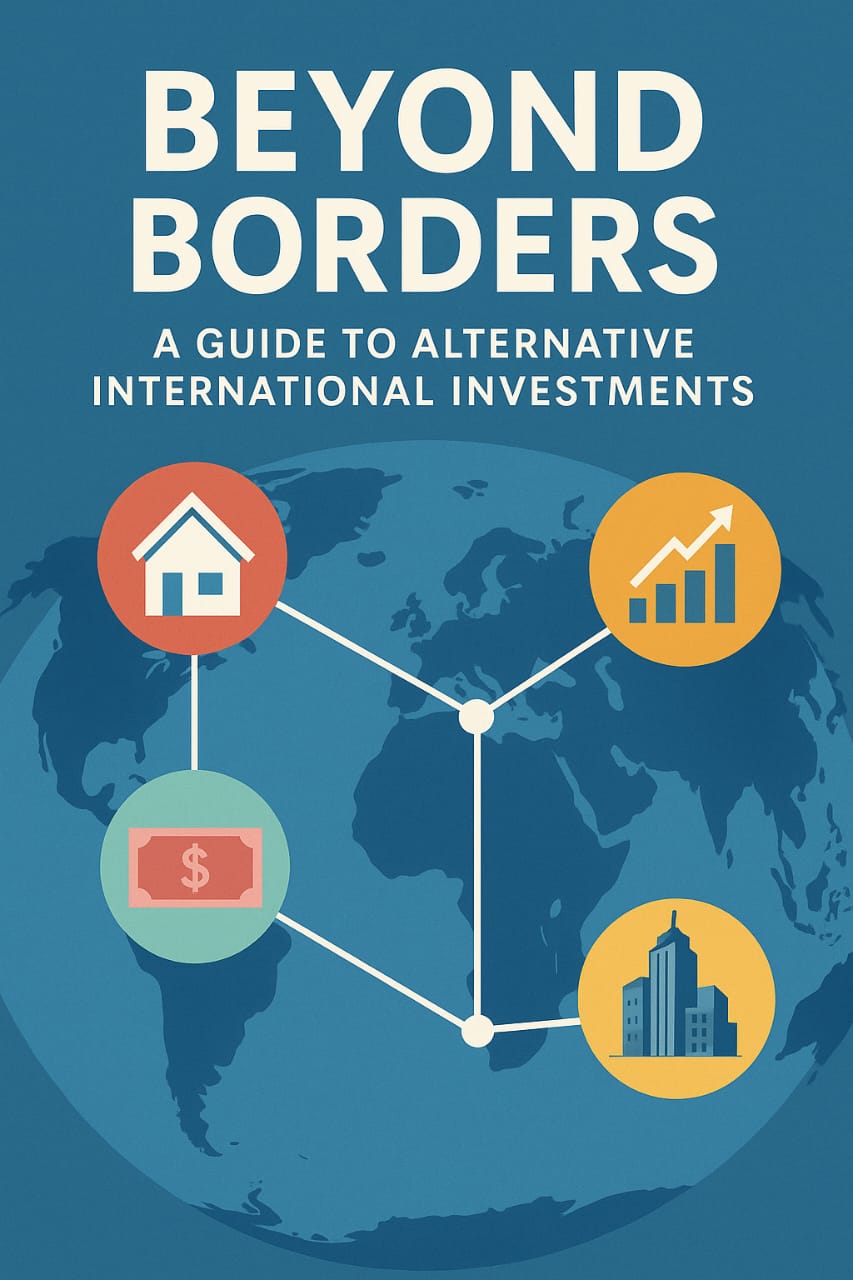November 5, 2025
✅ Logged out successfully!
✅ You are now logged in!
November 5, 2025

In an increasingly connected world, investors who limit their portfolios to their home country are leaving growth — and protection — on the table. Global diversification is no longer just a buzzword; it’s a necessity.
Whether you’re seeking better returns, lower risk, or exposure to emerging economies, alternative international investments can help you achieve a truly resilient portfolio.
Most investors fall into a trap called “home-country bias” — overinvesting in domestic stocks or real estate simply because it feels familiar.
However, with rising global inflation, geopolitical uncertainty, and increasingly correlated markets, staying local can expose your portfolio to unnecessary risk.
Investing across different geographies and asset classes adds a layer of protection. If one economy slows, another may thrive.
1. Direct Purchase (High Control, High Complexity)
Buying property abroad means full control — but it also means dealing with foreign laws, taxes, and property management. Great for wealthy investors, but complex for most.
2. International REITs (Easiest but Limited Exposure)
These are publicly listed funds that own international properties. They offer easy access and liquidity but are still tied to public market sentiment.
3. Real Estate Crowdfunding (Targeted but Risky)
Platforms let you invest in specific global projects — like a hotel in Spain or apartments in Vietnam. Returns can be high but come with concentrated risk.
4. Fractional Ownership Platforms (Simplest and Smartest)
Modern platforms — like AssetList.io — allow you to invest small amounts in pre-vetted, cash-flowing properties worldwide.
From a $500 apartment share in Tokyo to a $2,000 stake in Dubai’s skyline, you can diversify effortlessly, all from one dashboard.
Art, wine, luxury watches, and rare cars now trade globally. These assets move independently from the S&P 500, providing real diversification.
Lending to small businesses abroad offers stable returns uncorrelated with stock markets — especially in high-yield regions like Southeast Asia and Latin America.
Assets like farmland, timberland, and gold stored abroad act as inflation hedges and protect against currency risk.
Tech ecosystems in cities like Berlin, Singapore, and São Paulo are booming. Early exposure can yield extraordinary returns.
“Safe” isn’t the right word — “manageable” is. Like all investments, international ones carry risks — but the right strategy mitigates them.
How to Mitigate:
✅ Use trusted, regulated platforms.
✅ Choose stable jurisdictions (Singapore, UAE, EU).
✅ Diversify across regions and asset types.
Emerging markets like India, Brazil, Mexico, and Vietnam offer some of the world’s fastest growth — but also volatility.
Public Markets (ETFs):
Buy ETFs like EEM for easy exposure, but be prepared for price swings.
Private Markets (Alternative Route):
Access private credit, infrastructure, or real estate projects in these regions via curated platforms. This gives investors real economic exposure — not just stock sentiment.
International alternative investing is no longer reserved for the elite.
With tokenization and fractional ownership, investors of all levels can build global portfolios with lower entry barriers and higher transparency.
🌎 Stop limiting your portfolio to one country.
At AssetList.io, we make global diversification simple, compliant, and data-driven — helping you invest beyond borders with confidence.
👉 Start exploring global opportunities today at AssetList.io